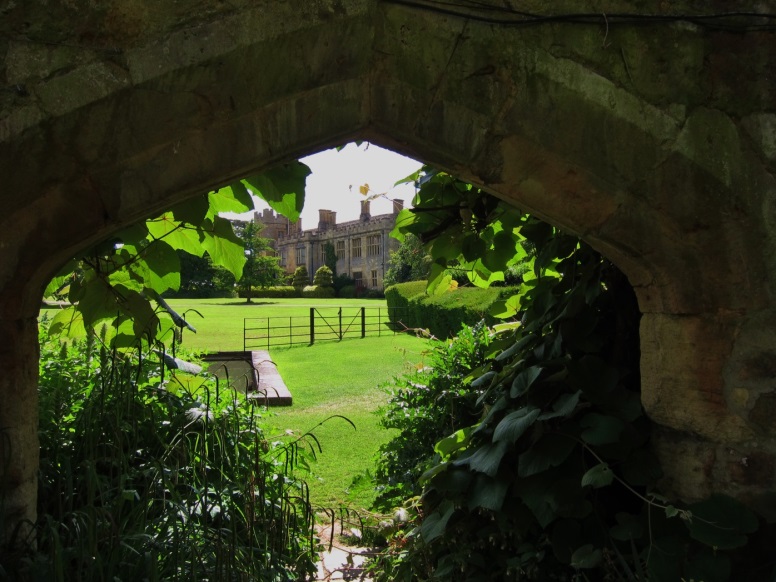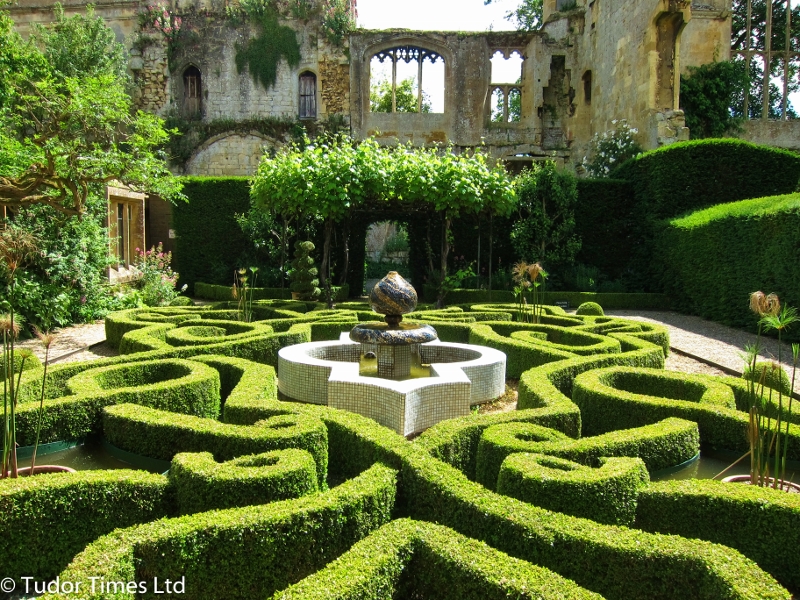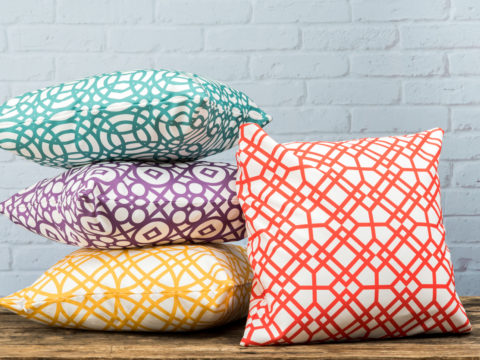Sudeley Castle
The Loveliest Castle in England?
Chapter 2 : Visiting the Castle
It would be easy to spend the greater part of a day at Sudeley, there is so much to see.
The visit opens at the Visitor Centre in the car park. There is a short video introduction by Lady Ashcombe, the current chatelaine, with some additional input from her family. Immediately, you feel that this is a well-loved family home and that the owners are delighted to share it with visitors, not just for commercial purposes (although we need to be realistic about the costs of maintenance of such a house) but because they want as many people as possible to enjoy it.
There is also a guest appearance from Griff Rhys Jones!
The shop is small, and not especially well-stocked, and the loos are currently portaloos (don’t worry, there are excellent loos in the Castle itself.) We understand that the visitor centre will be completely rebuilt over the next year, with a café included.
The path to the castle twists and turns through light woodland for about 200 yards/meters, before reaching the ruins of the Tithe Barn. Piercing the barn wall is a gate festooned with clematis and roses. Passing through, you find yourself in an enchanting garden. Exiting the barn on the far side, the main castle is framed in the stone doorway.

The path leads beside a formal ornamental pond, up to the terrace, and into the space between the mediaeval structure on the right, and the restored Tudor/Victorian structure on the left.
Entering the Castle, under the coat of arms of Queen Katherine Parr, the history of the castle is introduced with an excellent exhibition covering the whole of the site since Neolithic times.The majority of the exhibition on this floor is taken up with the enormous collection of Emma Dent.
At this point, you can visit the café and the loo!
Upstairs there is an absolutely enthralling series of exhibitions.There are models of the Six Wives of Henry VIII, all in accurately recreated costume;original letters and copies of historic documents relevant to the house.
Most gorgeous of all is a huge tapestry, dating from the sixteenth century, part of an exhibition on needlework and textiles.There is a video about Stumpwork (a kind of raised embroidery, popular in the 17th Century) and an astonishing collection of lace.
Passing through the rooms, there are exhibits relating to the Castle’s most famous inhabitant, Queen Katherine Parr, including a lock of her hair (romantically described by her biographers as having chestnut lights, but looking plain dark blonde to me) and a tooth. Less unnerving, are specimens of her letters and writings. A video of an interview with Dr David Starkey on Katherine Parr plays nearby.
The most in interesting room of all, is, perhaps, Katherine Parr’s Privy Chamber and her guarderobe. The Privy Chamber is decorated in Tudor fashion, and overlooks the location of the original Tudor knot garden.
Finally, you traverse the linking corridor to the other side of the Castle where the exhibition continues with King Charles I’s bed, and another superb Tudor tapestry, as well as an inlaid box belonging to King Charles and a delightful set of delft-handled dessert knives and forks from the early 18th Century, in a shark-skin covered canteen.
You exit the linking corridor into the modern knot garden – a real suntrap!

